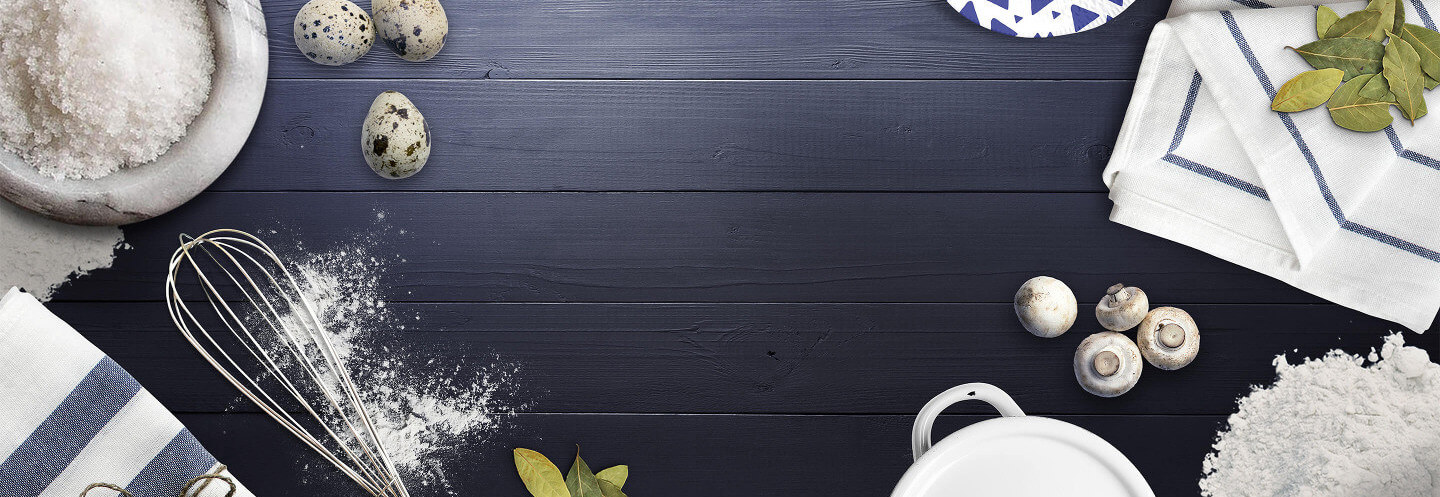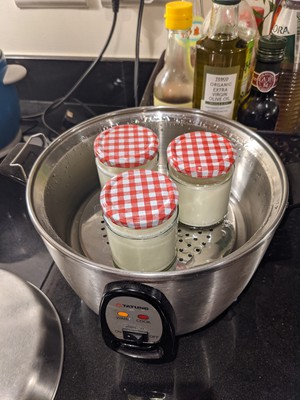https://www.copymethat.com/r/VfT91E3oT/rice-cooker-yogurt/
73867740
Sv8ovEO
VfT91E3oT
2024-04-25 11:28:05
Rice Cooker Yogurt
loading...
X
Ingredients
- Whole Milk
- Live Yogurt culture
- Glass jars
Steps
- Clean the glass jars with hot water, fill to 80% mark with milk, then microwave until they reach 181 to 185 F (83 to 85 °C) in the microwave. In my microwave, 360 ml of refrigerated milk takes about 3 minutes at 900 watts to reach that temperature. Use coffee thermometer to check periodically.
- Close the jars loosely and allow to cool slowly to 43 to 45 °C (108 to 115 F), which takes about 30 minutes.
- Clean the rice cooker with hot water and fill it with a mixture of hot and cold tap water until the thermometer reads 45 °C / 115 F.
- Stir a tablespoon of yogurt starter into each jar, about 5% to at most 10% the volume of milk. Close the jars, and place them in the water-filled rice cooker, close the lid, and cover the rice cooker with a towel. Don't turn it on.
- If the water cools down below 35 °C (95 F), you could put it on warm mode for a while until it's back up, but be careful as it keeps going to about 55 °C which may kill the bacteria. Or just add more hot water.
- After 5 to 8 hours the yogurt should have set. Don't move or bump it in the meantime and measure temperature of the surrounding water rather than the yogurt.
- Once set, place the yogurt jar in the fridge for 24 hours to set properly.
- Either ferment from the store-bought yogurt, or save a starter culture removed at about the 4-hour mark of fermentation, before all the lactose is consumed. After one week you'd have to feed it with some fresh pasteurized milk, and use within two weeks.
Notes
- S. thermophilus optimal growth temperature range is 35 to 42 °C (95 to 108 F), L. Casei 35 to 40 °C (95 to 104 F).
- Both are facultative anaerobes (don't have to use oxygen), and can ferment up to 45 °C, but not 50 °C.
- Do not rush the cooling down of the milk - it needs to stay hot at least 20 minutes to coagulate.
- Do not add the starter too early: temperature of 120 F (48.8 C) or higher damages the bacteria, shutting them down.
- Using less than 5% starter makes fermentation take too long, more than 10% makes it too fast for the yogurt to set.
- Do not let jars touch the bottom of the cooker, even on keep-warm mode that gets too hot, allow the culture to be heated by the vapours primarily.




